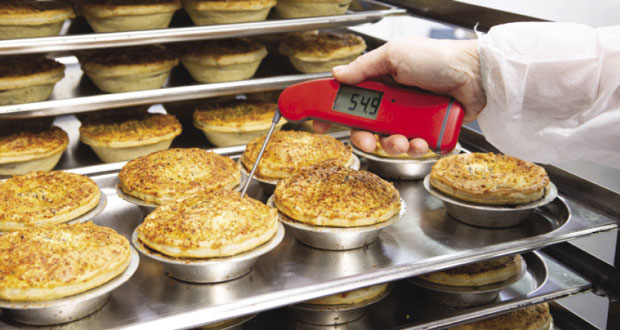 Catering facilities must meet stringent safety standards. Here, Jason Webb, Director, Electronic Temperature Instruments, explains how the technology is there to keep both food and people safe
Catering facilities must meet stringent safety standards. Here, Jason Webb, Director, Electronic Temperature Instruments, explains how the technology is there to keep both food and people safe
There’s been a clear rise in sanitary and safety precautions across most industries since last spring, especially for those involving food consumption and distribution. Safety remains at the peak of agendas for hospitality and catering staff, and that is unlikely to change for some time.
Consumers are tuned in to safety demands and will not accept any compromises. In fact, 75 per cent of customers would never visit a food outlet again if they breached safety procedures or experienced a lack in hygiene regulations(i). Consumers will be unforgiving to those who don’t follow regulations. Therefore, restaurants and food outlets that opened during the various lockdowns in 2020 have put tremendous effort into upholding sanitisation in the kitchen and public spaces, as well as adhering to social distancing measures.
These heightened demands require additional spend, whether that’s in the public space, in the kitchen, or in the food customers are eating. While maintaining this system may seem a daunting prospect from both a cost and quality perspective, we can still meet heightened safety demands while keeping costs low.
MEETING SAFETY DEMANDS
Every business owner is required to assess risks in their business and implement measures to reduce them. Restaurants, pubs, and bars already open must continuously assess the safety of their building to remain in operation. Running a business in the hospitality sector is a complex undertaking at the best of times, but this complexity has intensified amidst the pandemic.
Solid safety and hygiene can determine whether a business sinks or swims. It is imperative all regulations in social distancing are met and food safety remains a priority.
To keep food and people safe, catering teams must ensure no cross-contact or contamination takes place. Cross-contamination can endanger customers, and it occurs when bacteria or harmful micro-organisms are unintentionally transferred from one food item to another. The ability to measure temperatures over various ranges throughout the food supply process is essential to food safety, as dictated by a Hazard Analysis and Critical Control Points (HACCP)(ii) plan.
Providing hand sanitiser for customers and employees remains a simple yet essential protocol. There are hotspots within restaurants such as door handles, toilets, and even chairs. Surfaces throughout the building also contain bacteria so it’s important these are cleaned regularly with anti-bacterial wipes to maintain good hygiene.
Ventilation with clean air is a high priority both indoors and in enclosed outdoor areas. To reduce the concentration of respiratory aerosol particles in the air, simply opening doors, windows, and checking ventilation systems are operating efficiently is good practice. However, sometimes this isn’t always enough and it’s extremely difficult to measure if the air is toxic and food can be contaminated. A hygrometer can be used to measure the quantity of water vapour present in air, with many products sensitive to variations in humidity, produce needs to be measured and controlled to be consistent in both quality and performance.
DATA SOLUTIONS
Measuring and maintaining food safety, needn’t be an expensive practice. The technology is there to keep both food and people safe, and this can have long-term positive consequences to the bottom-line of any catering business.
Temperature control is critical to ensuring a high quality and safe product is delivered to the consumer’s plate. Constant monitoring is required, and a cost-effective way of doing this is not through several manual checks of storage units each day, but with wireless data loggers.
Wireless data loggers are IoT-enabled devices which provide catering facilities, supermarkets, and transporters with the information they need to act immediately should any unforeseen issues arise when it comes to food temperatures.
Data loggers are constantly gathering and examining data, information which is then made accessible both remotely and in real-time. The longevity in costs can save a business a tremendous amount of money. The numbers speak for themselves.
Let’s say a catering company requires one person to take five different temperature checks three times a day. This equates to approximately 73 hours of labour annually which (based on the UK minimum wage for over 25s) comes in at around £636. A wireless data logger will be able to provide the same insight for less than £30, meaning companies can save in excess of £600 a year depending on the scale of their operation. As well as time and money, there are other benefits.
The danger of human error is avoided, and everything is entirely paperless, removing the need for multiple members of staff to handle pens, paper and thermometers. This important reduction in contact is key to ensuring a COVID-safe working environment. The rise in sanitary and safety precautions across catering companies and hospitality will remain even after the pandemic. Habits to keep the building, the food, and the people safe will endure as a priority for businesses. However, advancements in technology have evolved even further because of the pandemic, and businesses can bear fruit from its rewards. Companies can use this technology to achieve the very best in safety and hygiene, whilst even cutting costs along the way.





